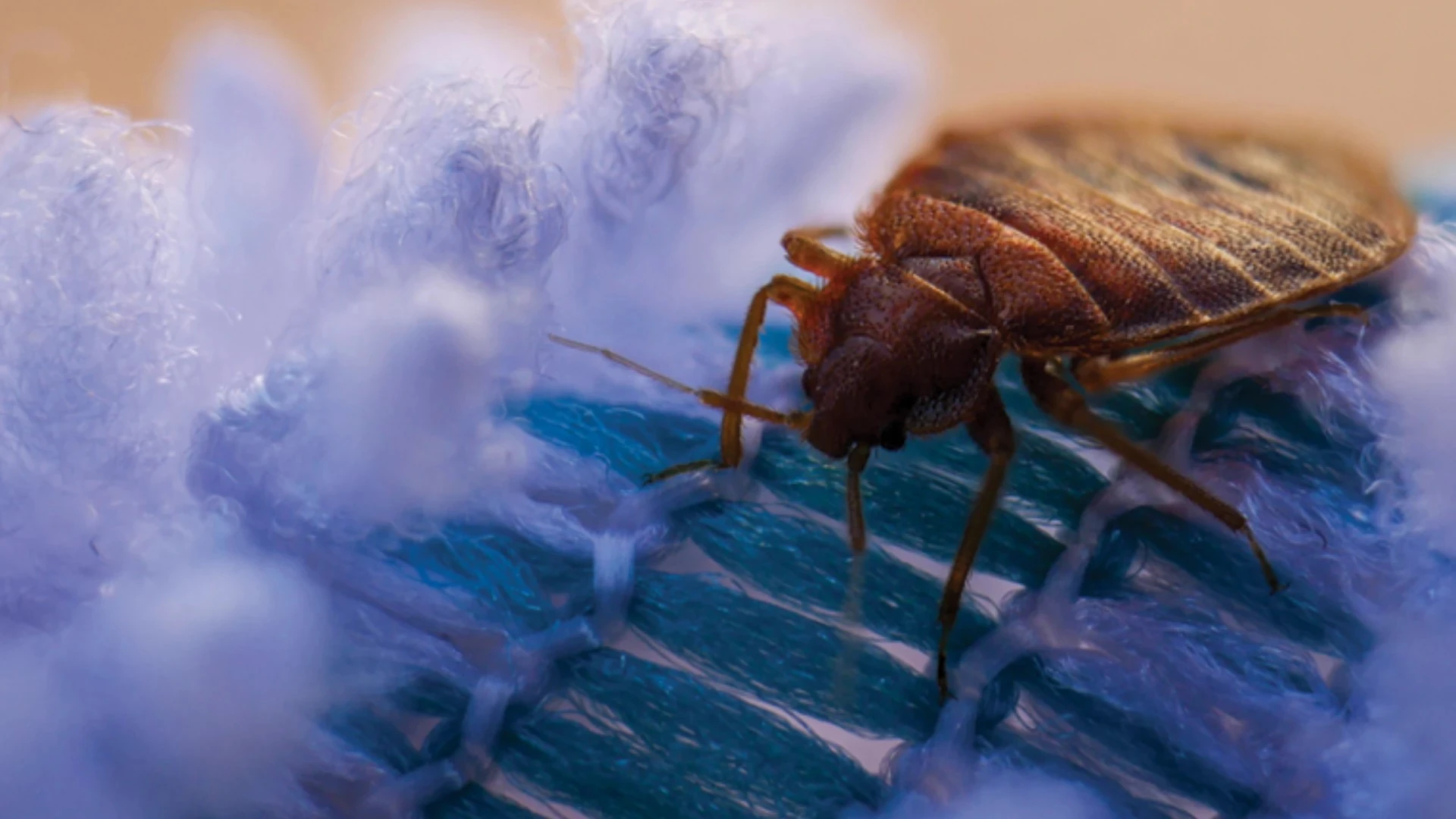You’ve heard it before: swarms stink, government and real estate agent groups are eliminating mandatory inspections, and housing fell off a cliff, setting up the worst financial crisis since the Great Depression.
It’s no surprise that industry-wide, termite revenue has skidded off the charts. From its peak in 2005 through 2008, total revenue derived from all termite service (including renewals) declined nearly one-half billion dollars, according Specialty Products Consultants President Gary Curl, who annually surveys the industry. The outlook for 2009 is expected to be down again for the fourth straight year, he said. (Those numbers are not yet tabulated.)
And yet, termite work still accounted for $1.27 billion in 2008, and some companies are very adept at keeping and growing their share of this business despite the challenges. How do they do it? To find out, we talked to professionals whose termite business makes up 30 to 70 percent of their total revenue, as cited in PCT’s 2009 Top 100 issue.
Sell Protection. Most will tell you they aren’t in the business of selling home-owners termite jobs. "Are you selling a termite job or are you selling protection for their most important investment?" asked Cindy Mannes, chief marketing and strategy officer for Arrow Exterminators, Atlanta, which gets more than half its revenue from termite business.
Selling protection makes termite control personal, especially in this economy. "People are going to take care of what they have" instead of moving up to the next-size home, said Steve Phillips, president of Northwest Exterminating, Marietta, Ga., which had 64 percent of revenue come from termite work in 2009. During the bubble, homeowners didn’t worry about termites because they weren’t going to be there that long, he said.
"What are you waiting on swarm season for?" asked Charleston, S.C., Palmetto Exterminators Vice President Bert Snyder. "There’s no money in termite treatments" or pretreats. Those jobs, he said, only are valuable for the renewals they create. "We spend all of our time trying to capture and retain those annual renewals," said Snyder. He should know: Palmetto gets 67 percent of its total revenue from termites, and of that more than 80 percent from renewals.
Cross Selling. Last year at the Terminix Company franchise in Greensboro, N.C., post-construction termite sales rose six percent, and pest and termite professionals sold $350,000 in termite-related services like vent repair and moisture control. Termite revenue was 35 percent of total income, according to PCT’s Top 100 ranking.
"We think of a pest ticket as a termite lead," said COO Burns Blackwell. Customer history is printed on service tickets so professionals "always know where the sales opportunity is." No termite protection? Customers are offered a free inspection on the spot.
And Blackwell’s employees still find "lots and lots of termites." Customers are thankful when the pests are found and they can obtain protection before the problem gets bad, he explained. Employees solve customers’ problems and make more money for it.
In addition to cross-selling services to existing customers, many firms are generating leads through structured referral programs.
Massey Services, Orlando, Fla., with 34 percent of revenue coming from termite business, started a sales management process to better track daily accountability of lead management and prospecting. "It’s paying off in terms of unit sales," said Quality Assurance Vice President Adam Jones, who cited the similarity between growing termite and lawn care businesses. "It’s door-to-door, customer-to-customer prospecting, and selling consumers on the value of protecting their biggest investment against the threat of termites."
Robert Benham, general manager at Guarantee Floridian, Miami, Fla., where 40 percent of the company’s revenue is termite driven, agreed. His sales team is "getting in front of people" by knocking on doors and being active in networking groups throughout the community. Employees have a "hunter’s attitude," which helps eliminate much of the "cut-rate" competition in South Florida, he said.
Offers They Can’t Refuse. The goal at Palmetto Exterminators is to "maintain that house as a customer indefinitely," said Snyder. Ninety-eight percent of customers renew their termite protection plan for the next 10 years. "It’s like compounding interest," he said. But it takes a labor-intensive process to make those numbers.
First, new homeowners get a termite warranty package from the builder at closing. Six months later, they receive a package from Palmetto that provides company and warranty information and explains what they will receive closer to renewal time. Because home ownership often changes, Snyder tracks down owner contact information through builders and tax Web sites. Never does the company send a package to "home-owner."
Renewal notices and invoices are mailed 45 days prior to the month in which renewals are due, followed by second and third notices. A final notice informs homeowners the warranty will be cancelled unless renewed and asks them to sign the enclosed legal form releasing the company from future termite damage. "That wakes people up," said Snyder.
Those who don’t respond get a call from the branch manager and a visit from a sales person.
Make sure you have a viable system for recapturing homes you’re protecting when new owners move in, added Joey Harris, COO of Cook’s Pest Control, Decatur, Ala., where termite work accounts for 43 percent of the bottom line. "Every time a person moves, it jeopardizes you retaining the service."
Collections play a role, too. Customers pay quarterly for Cook’s termite protection. If they get behind a quarter or two, "they start looking at a pretty large number" and begin "questioning whether it’s a service they need," said Harris. Help customers stay current because there’s a "correlation between collections and customer retention," he explained.
*****
Glimmer of Hope in the Termite Market?
According to Specialty Products Consultants President Gary Curl, who annually surveys 800 pest management firms, "The industry rode the housing market up and they’re now riding it down." Figures don’t lie: Curl’s latest research shows termite revenue declined 13.4 percent to $1.27 billion in 2008. Pre-construction revenue dropped 36.3 percent due to weak new housing starts, post-construction revenue declined 12.7 percent, and renewal revenue fell 6.8 percent.
Professionals surveyed by PCT in December concur: More than half said the 2009 termite season was below average. As for termite swarms, 66 percent said they’ve been below average the past three years. Respondents were split, however, in their predictions for 2010. Forty-three percent felt termite growth will be flat, while 45 percent expected growth.
The National Association of Home Builders expects total housing starts to rebound 25 percent in 2010 from a historic low in 2009. Last year, Northwest Exterminating in Marietta, Ga. hustled to replace lost new construction pretreat revenue — the company did 4,000 pretreats compared to a high of 17,000 in 2007. The firm did $400,000 more in production in 2009 than 2008, said President Steve Phillips.
Arrow Exterminators in Atlanta noticed an increase in residential post-construction termite starts, said Chief Marketing & Strategy Officer Cindy Mannes. It also saw upward movement in areas for inspections and wood infestation reports. "We have seen an up-tick. Slight, but still an up-tick."
Bert Snyder, vice president of Palmetto Exerminators in Charleston, S.C., experienced "more termite activity in the last couple of years than I’ve seen in the last 15 to 20 years." Along the coast from Charleston to Hilton Head, "Formosan termites are eating peoples’ lunch." In a three-month period, he witnessed $4 million in termite damage to houses not under warranty or under warranty with other firms. New construction in the area is still down 80 percent, but the 50-year-old company had slight growth in 2009.
*****
Empowered People. Termites may not swarm in homes like the glory days, but Massey Services Termite Technical & Training Director Ed Blumenthal says activity has increased. "You just have to get better at finding them." He’s training Massey employees — sales and lawn and pest technicians — to recognize the subtle signs and conducive conditions. Instead of hundreds of swarmers on a windowsill, one might find a few wings on a corner-bedroom baseboard or in a cobweb on an outside eave. "You find more activity, you find more opportunity, and you take advantage of it," said Blumenthal.
Guarantee Floridian employees get sales and technical training from national experts, said Benham. That way, "everyone is on the same page" and customer expectations are met.
Companies need more than a good plan to grow termite business, said Phillips. "You’ve got to have good people" who are dedicated and passionate and who are going to work hard to make that plan a reality, he explained. "Teammates make the difference."
Anticipating a housing comeback, companies have continued to build relationships with builders and real estate agents. We "must be with them through thick and thin to be part of their thinking," said Arrow’s Mannes.
Creative Pricing. "Bundling" termite protection with pest, lawn and other services helped lead Massey Services to nine consecutive months of growth, said Jones. Customers get "significant discounts" when they buy more than one service, which increases Massey’s route density and share of the market. "It’s been very effective for us in the last year," said Jones. Despite a hit to termite revenue due to the lower prices, bundling helped other core businesses grow, as well as the business as a whole.
"I don’t think the market is down as much as people make out," said Jones. "What’s down is pricing." An average post-construction liquid termite treatment in Florida last year was $624, he said. Two years ago it was $850, and five years ago the average was more than $1,000. "We’re selling more termite business, but we’re not getting as much revenue for it as we used to."
Competition is healthy and good for the industry, said Mannes, but "to just sell on price devalues this whole industry and devalues that message of protection."
Beyond Traditional offerings. Companies like Arrow Exterminators have moved "beyond selling the next termite job," Mannes said. Its new STEPS Total Protection System offers customers whole-home protection from termites, rodents and pests. By integrating services and bundling prices, customers get whatever they need to protect home and family at a better value, she explained.
Considered more controversial by some in the industry is the Terminix Termite Inspection and Protection Plan, which costs as little as $35 a month.
As long as a home is free of an active subterranean termite infestation or damage, has a fully accessible crawlspace foundation and no below-grade construction, Terminix will annually inspect, as well as treat and repair the structure at no additional costs should it become infested. The plan meets consumers’ needs for affordable and environmentally conscious termite protection, because no materials are introduced to the living space until needed, explained Senior Vice President of Business Development Steve Good.
More than 120,000 customers have signed on since the plan’s introduction in 2006. "We’re growing because of it, we’re more healthy financially because of it," said Good. According to PCT’s Top 100 issue, 45 percent of Terminix revenue is termite related.
More than 1.3 million termite customers and 80 years of historical data on re-treatments and damage repair across the U.S. give the company confidence the plan is "very good for the consumer and very good for Terminix," Good said.
The traditional ways of earning termite business have changed: Baits, he reminded, faced similar skepticism years ago. The industry must innovate and remain open-minded to new service approaches or "continue to observe the industry in decline."
Plans like the Termite Inspection and Protection Plan, Good said, could very well be the baits of this decade.
The author is a frequent contributor to PCT magazine. She can be reached at anagro@giemedia.com

Explore the February 2010 Issue
Check out more from this issue and find your next story to read.
Latest from Pest Control Technology
- Rentokil Terminix Expanded in Key Markets with 2024 Acquisitions
- In Memoriam: Joe Cavender
- Certus Acquires Green Wave Pest Solutions
- Liphatech Adds Alex Blahnik to Technical Team
- Do the Right Sting: Stinging Insect Identification, Management, and Safety
- VAGA's 8th Annual Veterans Thanksgiving Appreciation Dinner
- Clark's Blair Smith on the Response to Increased Dengue Fever Cases in Southern California
- WSDA, USDA Announce Eradication of Northern Giant Hornet from U.S.





